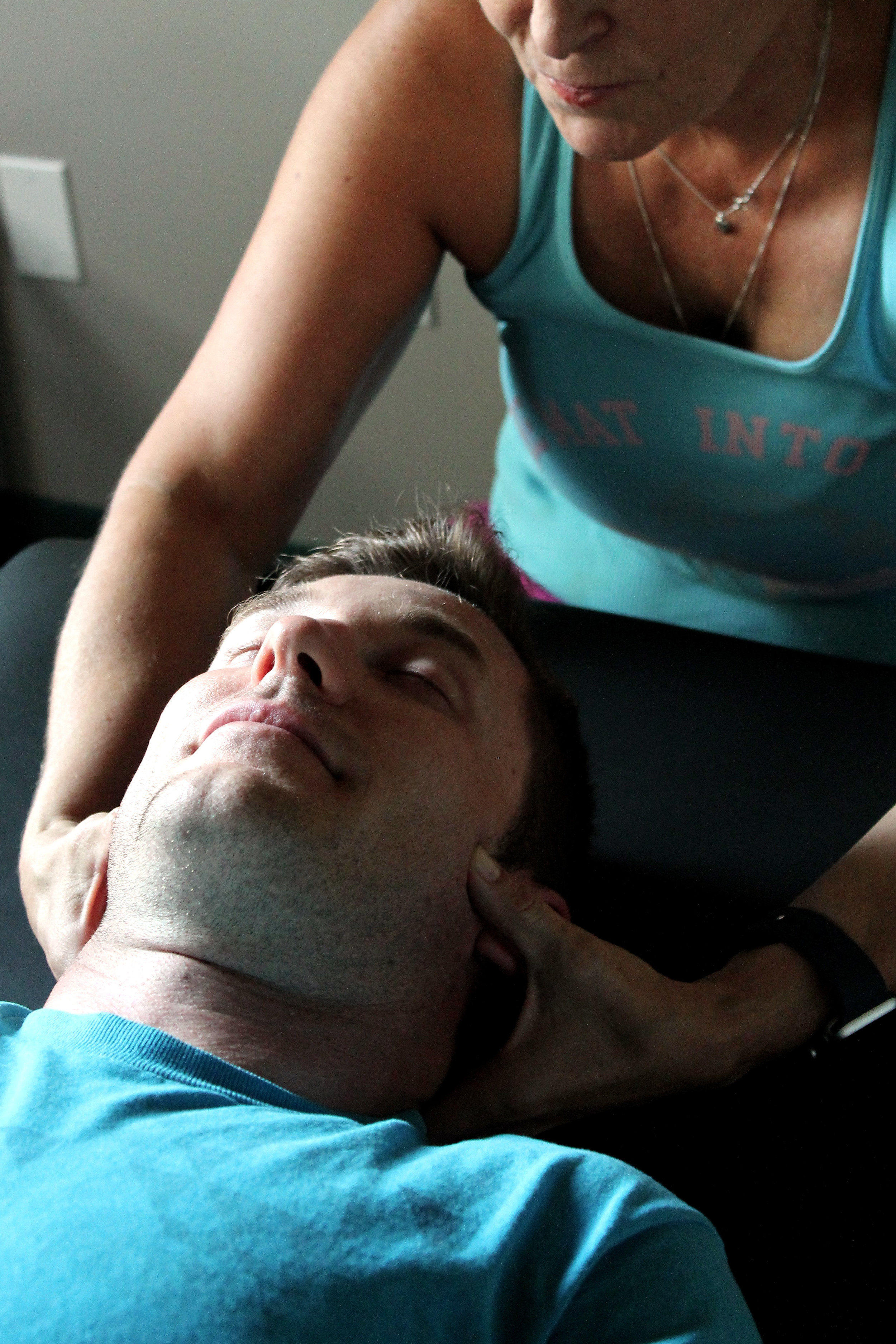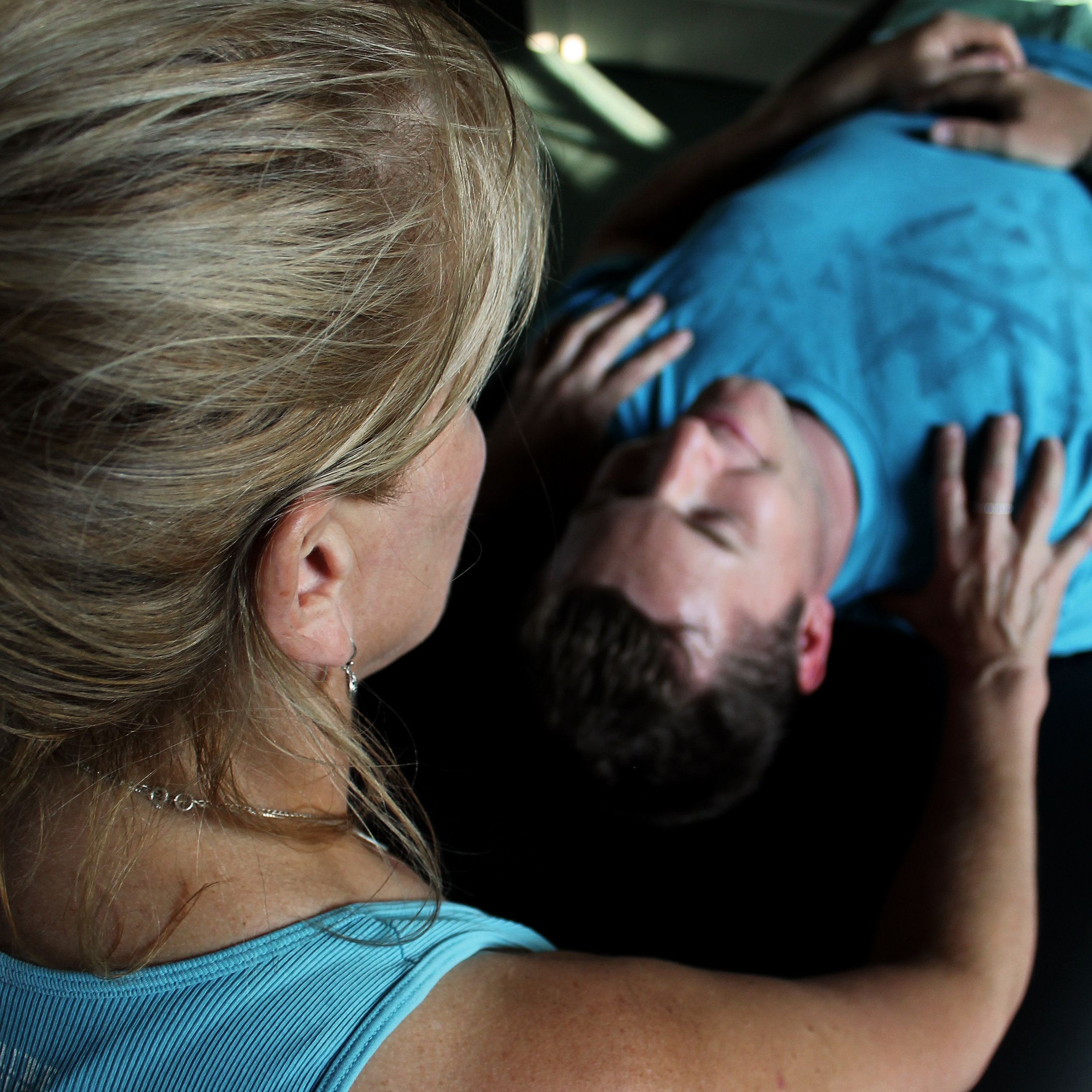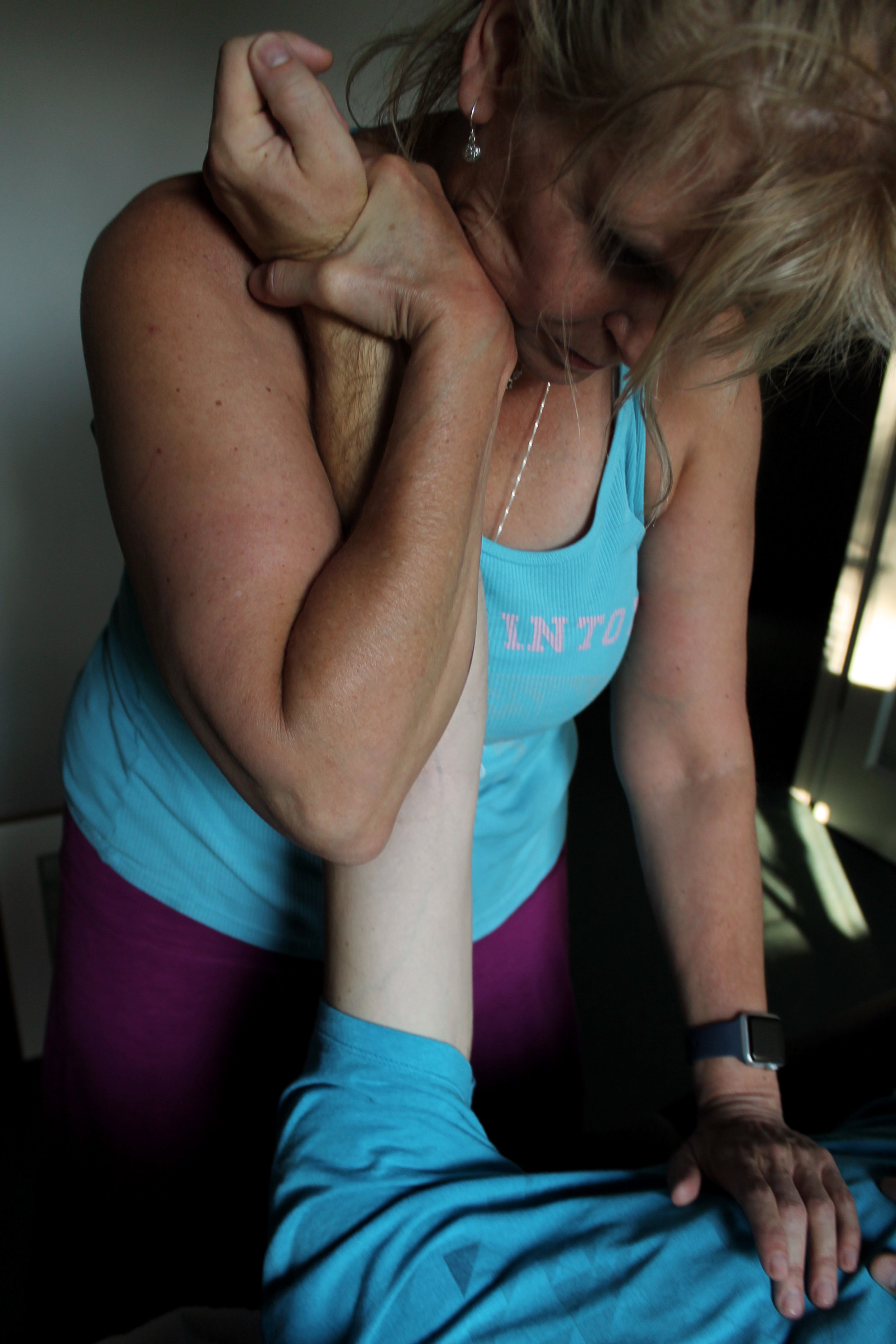As a system of non invasive, manual health care, Osteopathy focuses on the whole patient.
Osteopathy is based upon the principles:
* the body is a complete and dynamic unit of function
* structure and function of the body are interdependent at all levels
* the body possesses self regulatory mechanisms, which are protective and self healing in nature.
* and that - after careful examination and reflection - by addressing aberrant structure - function can be returned to normal..
Below are some of the Techniques employed by an Osteopathic Practitioner:
Muscle Energy techniques: in which contracted muscles are released by alternately being stretched and made to work against resistance.
Counter-strain techniques: which achieve release of restriction by placing the affected joint or muscle in a position of comfort, while applying a "Counter" stretch to the antagonists of the tight muscles.
Functional techniques: which involve gentle mobilization of joints in a way which "probes" barriers to normal movement until a way is found through the restriction levels in order to maximize safety and minimize patient discomfort.
Cranial Osteopathy techniques: which are very gentle release techniques honouring the fact that the central nervous system is housed in a fluid medium encased by meningeal tissues.
Visceral techniques: Organ specific fascial mobilization and the restoration of inherent movement.
Stretching techniques. Strectching - elongation of tissues..all tissues is integral to movement.
Articulation techniques: in which joints are mobilized by being passively taken through their range of motion.
please scroll down and peak to the right..there are some interesting links there..🙏
Osteopathic treatments are tailored to meet the requirements of the individual patient, and techniques are selected which are appropriate to the patient's needs.
The best way to come to an understanding of osteopathy is to experience a treatment. The goal of treatment is to relieve pain, improve mobility, and to restore health and vitality.
Osteopathic philosophy is based upon the principle that our physiology (how our body works) is an expression of our anatomy (our structure). Our structure/anatomy is a process - it is a dynamic situation- rather than a static one. We are made from living, ever changing tissues, not concrete (even though some days it may feel as such!). Our bodys' systems (nervous, musculoskeletal, lymphatic, physiological, enteric...) are interrelated at all levels - and - effective treatment is based upon this understanding, and proper assessment of the situation at hand i.e. If one is able to envision the collective workings of the human body as a "team"...then one is able to realize that when one member of this team is not performing as it should - the rest of the system is thrown out of balance, and that stress will be created in other parts of the system.
Osteopathic thinking involves a lot of searching.
Here are some examples of conditions and problems that manual osteopathic practitioners can help - in patients of all ages :
Back, Neck, and Limb Pain
Migraine and Tension Headaches
Post Concussion Syndrome
Sprains, Strains, and Tendonitis
Jaw Pain
Digestive and Respiratory Issues
Vertigo
Tinnitus
Circulatory Issues
Stress Related Conditions
Much, much more - please contact us and ask
FRENQUENTLY ASKED QUESTIONS
Why choose Osteopathy?
Osteopathic practitioners treat the person as a whole and integrated system.
Treatment focuses on getting to the root of the problem, not just addressing and or suppressing the symptoms . That which initially created the dysfunction, and / or is maintaining it,·is identified and dealt with in the most effective manner possible. Techniques used will depend upon a patient's needs and individual response to modalities (types of techniques) applied.
It presents as a wonderful compliment to the health care team you already have in place.
What can I expect at a treatment?
At your first treatment a complete health history will be taken.·This history is available on this website under the 'book an appointment' heading if you would like to fill it out before you come for your first visit.
A complete physical assessment follows: Postural evaluation with regard to the centre line of gravity done both in a static and dynamic manner (we look at you both standing still, and how you move - both your axial skeleton (your spine) and your appendicular skeleton (your limbs) are considered).
Orthopaedic ·and Range of Motion tests may be performed -- to identify joint restrictions.
Soft tissue palpation occurs -- to assess muscular, fascial, ·and organ mobility and motility.
Evaluation and treatment occur simultaneously as well, as the practitioner is always assessing during the actual hands on treatment.What should I wear to my appointment?
Please wear non restricting / gym type of clothing - preferably shorts/sweat/yoga pants and a (sleeveless) t-shirt/undershirt/sports bra
(to facilitate ease of movement during the session)Does OHIP cover osteopathic treatment?
No, osteopathic manipulation is not covered by OHIP.·Treatment is however covered by many extended health care plans.
Will my extended healthcare cover osteopathic treatment?
Some insurance companies in Ontario do offer osteopathic coverage, but it depends on your plan. Upon payment, a receipt will be issued to you that you can then submit to your insurance company.
Do I need a referral from my doctor?
You do not need a referral from your family doctor to see your osteopathic practitioner.PLEASE NOTE that some insurance companies may require you to have a doctor's referral for osteopathic treatment to be covered by them. Please check your individual policy for details.
How many appointments are required?
Each person is different. Treatment plans depend on how long they have had their condition, what sort of lifestyle they have and their state of health (vitality). I usually recommend three - five treatments, spaced one to two weeks apart. Thereupon you will be reassessed, and discussion between Practitioner and Patient will determine further course of treatment. Some people with less complex issues may feel better right away. People with more ·complex and / or chronic conditions may require further treatments. Reassessment occurs at every visit and a treatment plan is created for your individual needs.
Does osteopathic treatment hurt?
Osteopathic treatment is extremely gentle. Practitioners monitor the response of the body during treatment. One usually feels better after an osteopathic treatment although it is possible to feel ·achy and / or sore for a few hours after the treatment. When parts of the body that haven't moved well for a while begin to re-experience movement there can be some resultant aches - much like after a good workout.
Goals of Osteopathic Treatment
Normalize and Bring Balance to the Patient
- Improve their homeodynamic state
Improve the Patient's Anatomy and Physiology
- Biomechanical structure/function
- Neural tone and axoplasmic flow
- Vascular tone, blood distribution and flow
- Lymphatic content and flow
- CSF fluctuation, flow and distribution
- Intercellular communication and metabolism
- Extracellular communication and metabolism
Improve the Health of the Patient
Improve the Quality of Life of the Patient
Interesting subjects and ideas!
Please Click on the Links to explore some interesting subjects!
PEMF (Pulsed Electro-Magnetic Field Therapy) For Wi FI smog.
iRest PTSD - Interview with Richard Miller
THE 6 MOVEMENTS OF THE SPINE Take 5 minutes and wake up your spine. Your body will thank you.
THE POWER OF VULNERABILITY - A TedTalks by Brené Brown
PEMA CHODRON - Beloved Buddhist teacher, author, nun, and mother
LETTING GO - 18 fantastic ways to let things go
THE BRAIN AND THE GUT - A link between the stomach and the brain




